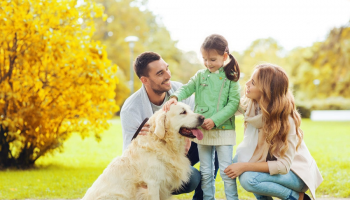Each dog has a distinct personality. As a result, each dog reacts differently to a car ride. Despite this, more than 70{f2f26ab5e03d0b265ae22b445d1101598e678ef39f67fc70960081a2b98018f9} of dogs exhibit anxiety symptoms, which are frequently linked to automobiles. What can pet owners do to make their pets feel more secure and at ease while driving? The following tips are for dog owners who want to help their frightened pets.
To begin, a dog may experience travel anxiety for a variety of reasons. Motion sickness plays a significant role. Dogs, like humans, can experience motion sickness in a car. This has an especially strong influence on the development of puppies’ ears and sense of balance. Even if the puppy’s motion sickness resolves, there may be a link between driving and poor health.
Other factors, such as overstimulation or a recent car accident, could also contribute to the dog’s anxiety. A sensory overload can be caused by a number of factors, such as moving cars or loud, foreign noises that strain the ears. Negative emotions like these have the potential to spiral out of control, resulting in stress and anxiety. Not to mention that the dog may associate long car rides with stressful doctor appointments.
What signs or symptoms should dog owners be aware of before taking their dogs on a trip? The symptoms of illness can be as diverse as people’s personalities. Stress causes increased panting, gnawing, licking, drooling, whimpering, or shivering in dogs. In more severe cases, premature urination or feces, nausea, diarrhea, or even a reaction may occur. Owners should seek professional help as soon as possible if their dog reacts violently to a fear of cars. Otherwise, the dog may endanger itself as well as others.
What else can pet owners do to reassure a scared dog? Given the gravity of the situation, a variety of treatments are available, including prescription medications, calming pheromone products, anti-anxiety compression jackets and collars, and over-the-counter calming medications designed specifically for dogs. These are frequently temporary fixes with no long-term consequences. Training and behavior modification, according to the vast majority of experts, are the most effective long-term methods of ensuring your dog’s success while traveling.
Although it is best to train a pet to be comfortable in a car when it is young, owners can use a variety of techniques to teach an older dog new skills and keep them calm in a moving car. More information on calming a canine travel companion can be found in the infographic below.





